Sourdough Pie Crust
It has taken me years to master a really good pie crust. I’ve always enjoyed this simple “press-in-the-pan” version but the flaky “Thanksgiving pie crust” or “Pi-day” pie crust seemed elusive. I’m happy to say that this sourdough discard pie crust has stepped up my pie game. Flaky layers, the tiniest bit of tang (if you want it) and just the easiest dough to work with. It’s so delicious and — even better — uses up that cold sourdough discard that is lurking in your refrigerator. Win-win!

Why You’ll Love Sourdough Pie Crust
This sourdough pie crust comes together within a couple of minutes. You can wrap it up and keep it in your fridge for a couple days before using. It’s tender, flaky and can stand up to any of your favorite fillings. Sourdough pie crust is versatile – it can work for sweet or savory pies ie: my favorite cranberry apple pie and I love it in this summer Southern Tomato Pie too. And last but not least, it tastes delicious. Pie crust can feel tricky, but with this sourdough pie crust recipe, your pie will turn out delicious!
Important Ingredients
- Sourdough Discard: I make this pie crust with cold sourdough discard straight from the refrigerator. Make sure you are using 100% hydration sourdough discard (equal parts flour/water). If your discard is not 100% hydration, you may need to add more or less ice water/flour to the dough. Use older discard for more sourdough flavor (complements savory pies) and younger discard for sweet pies.
- All-purpose flour: All-purpose flour with 11.5% protein content works well in this recipe.
- Sugar: A little bit of sugar helps the pie crust to brown and discourages gluten development – a key to a good pie for those flaky layers.
- Salt: Salt adds flavor to the crust. Don’t leave it out.
- Unsalted Butter: Unsalted butter makes the pie crust flaky and delicious.
- Ice Water: Ice water is added if needed to the pie crust to help it come together. Chilled water keeps the butter and ingredients cold resulting in more flaky layers.
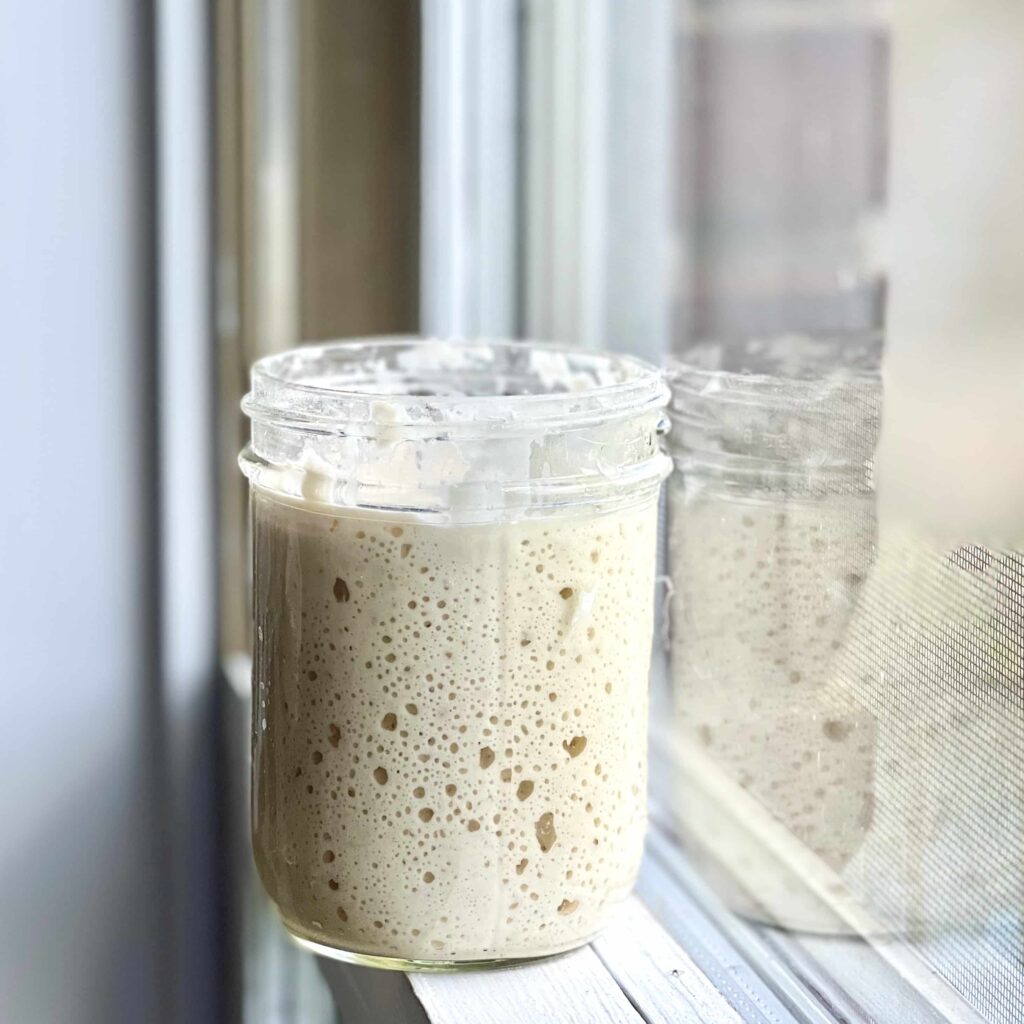
How to Make Flaky Sourdough Pie Crust
1. Use a pastry cutter or food processor.
Cut in the butter with half of the flour mixture. It will form a thick paste.

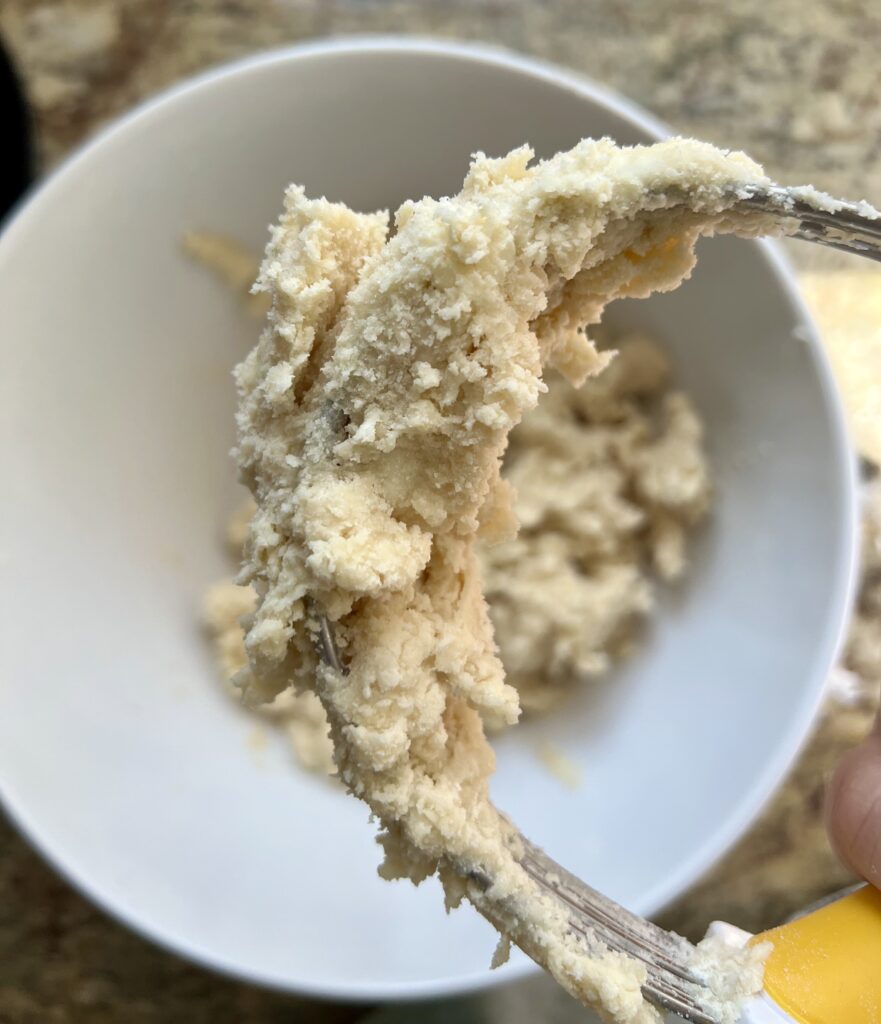
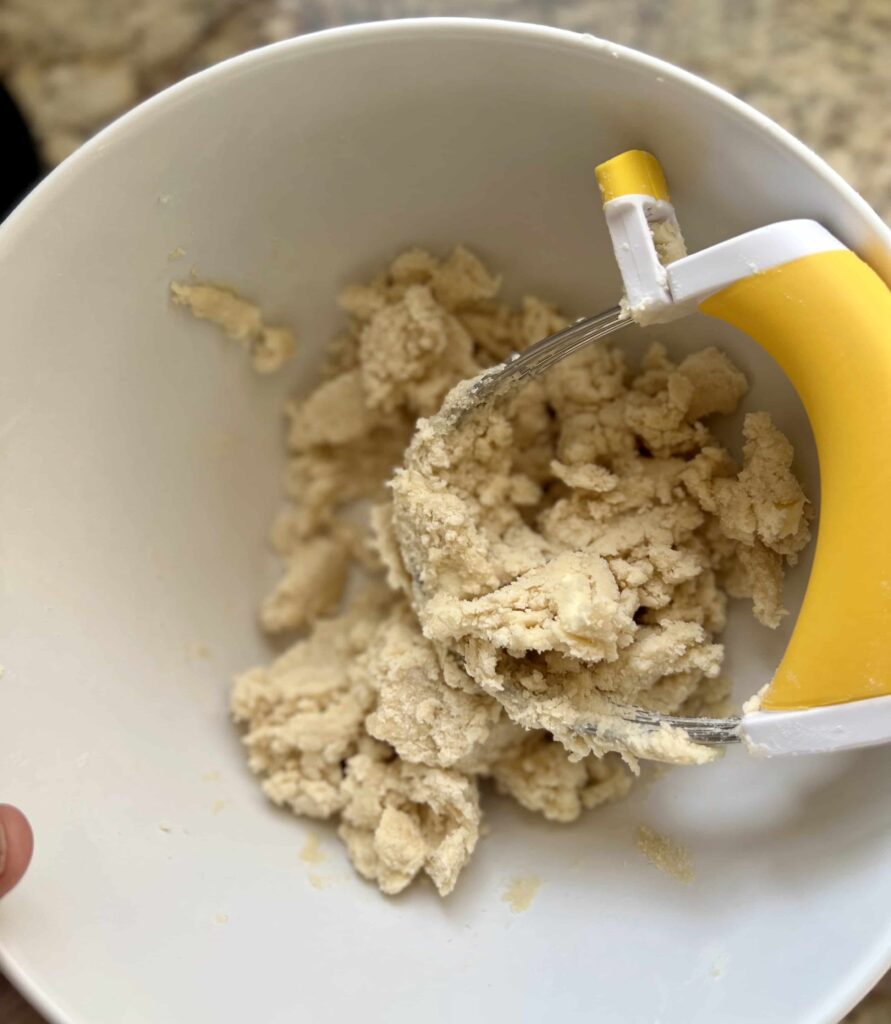
2. Add the rest of the flour.
Use the pastry cutter to distribute the flour mixture evenly throughout the dough. It will resemble crumbs.
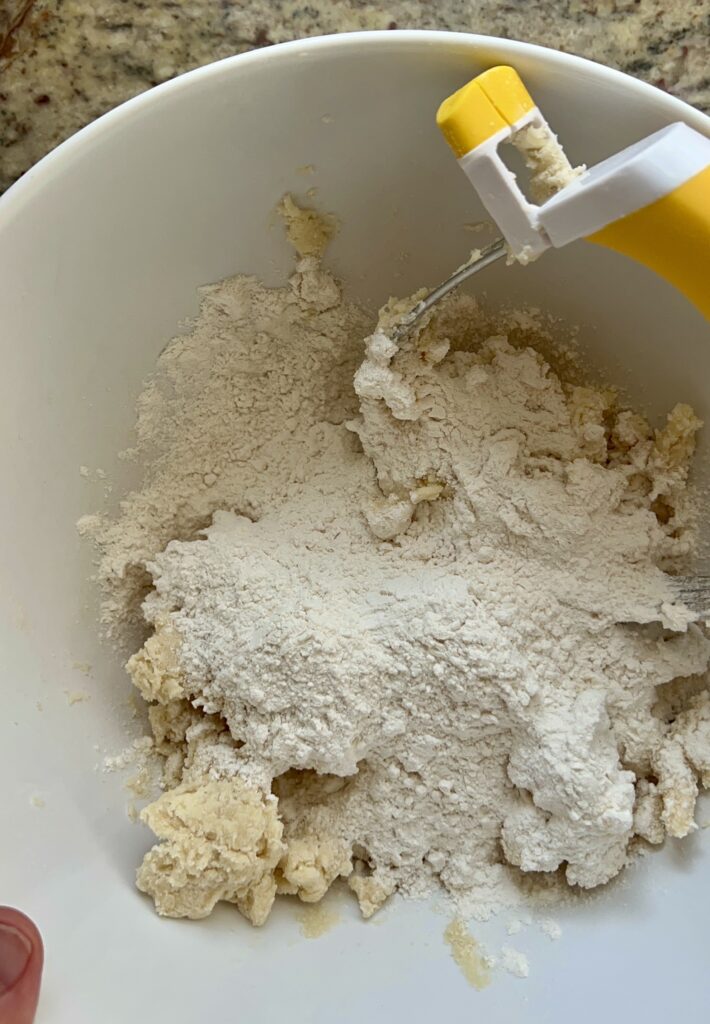
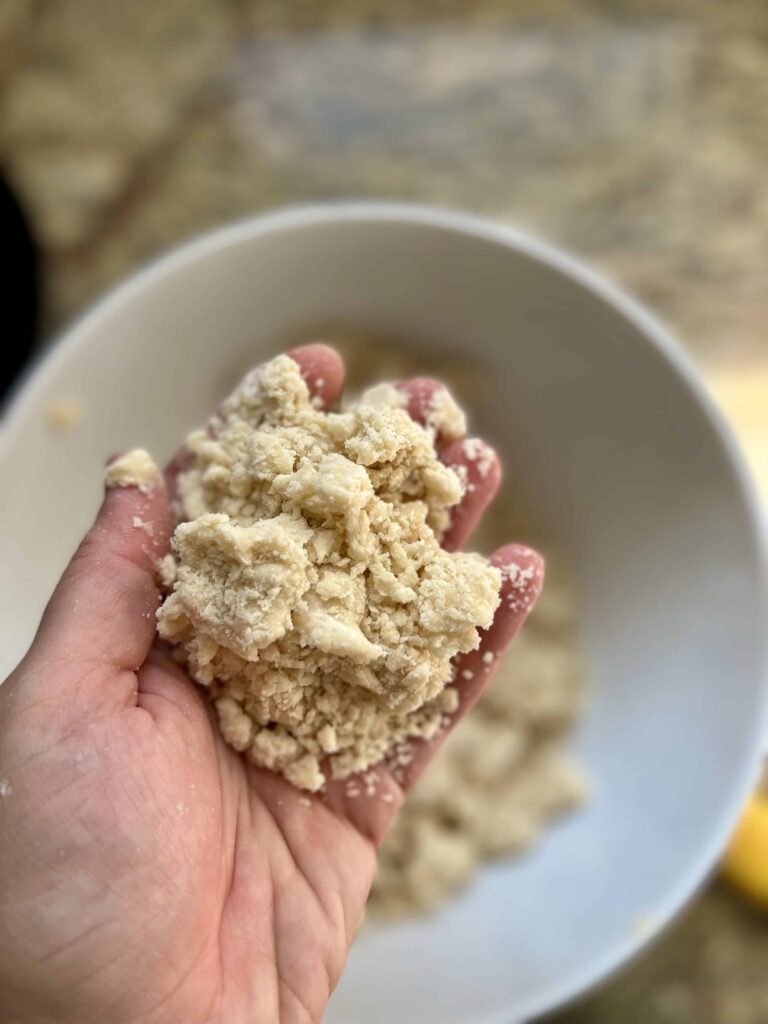
3. Pour in the chilled sourdough discard.
Use your hands to incorporate and form the dough into a ball. The crumbs should begin to form larger clusters and clump together. If the dough is too crumbly, add a Tablespoon of chilled water at a time until the dough clumps together and forms a ball. If you are using a very runny sourdough discard, you may need a little extra flour and NO water. If your discard is thicker, you may need a little more water.
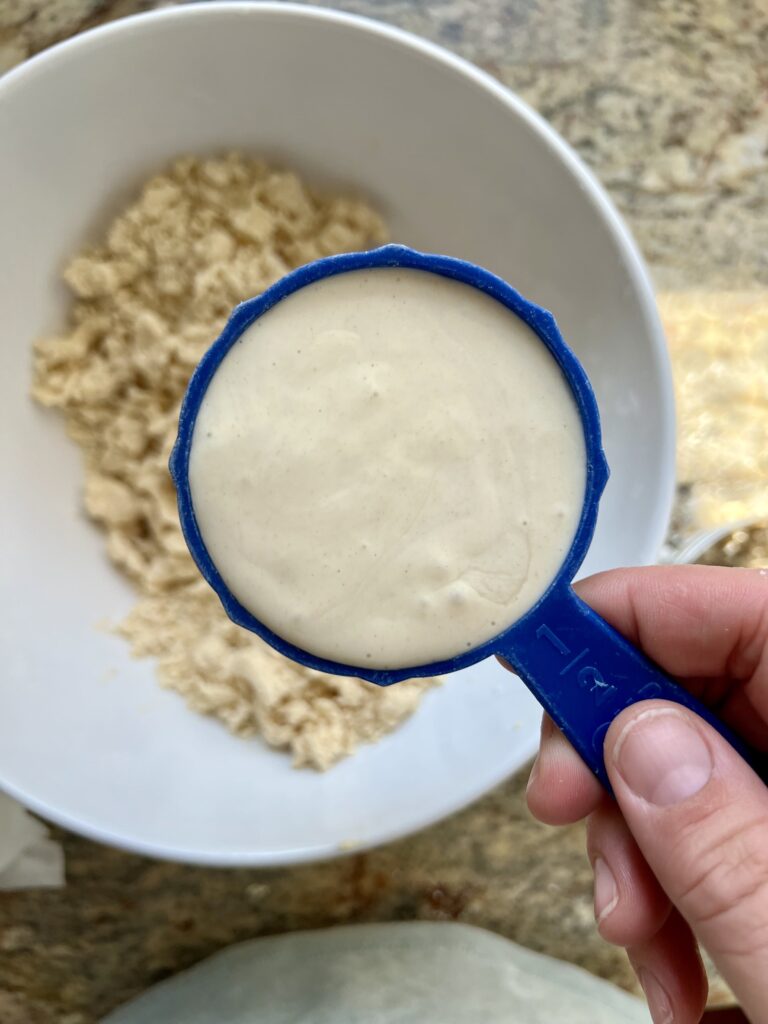
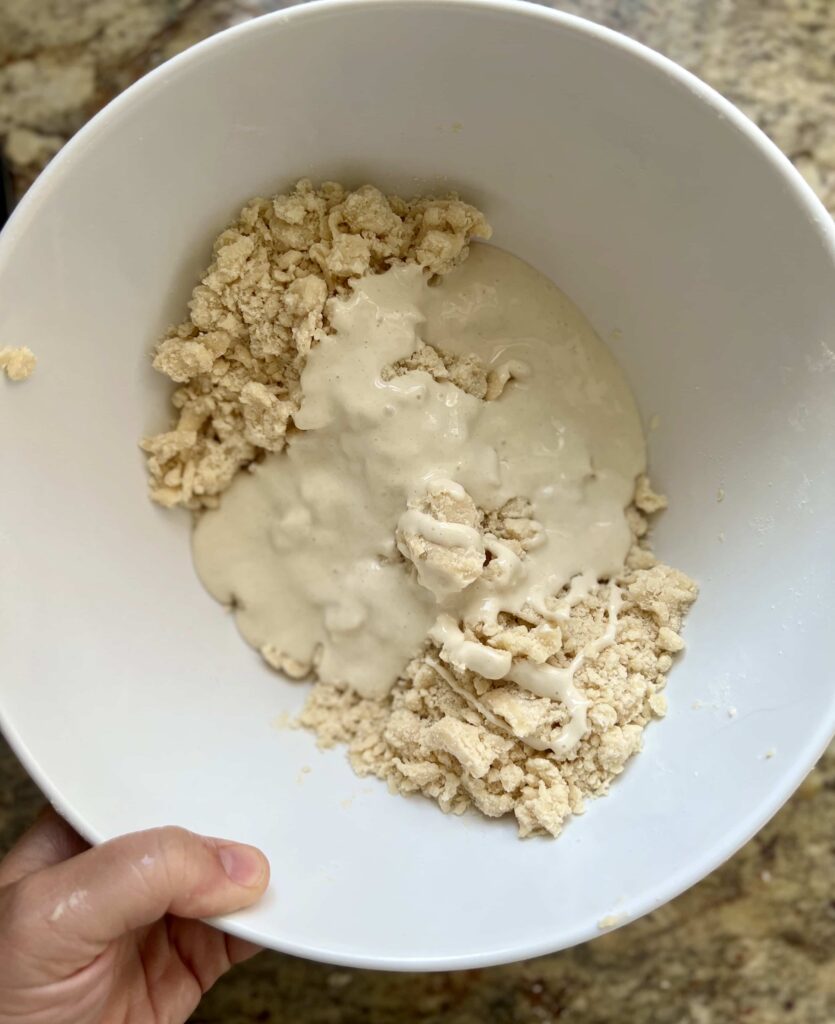

4. Cut crust in half.
Flatten into a circular shape and refrigerate for 20-30 minutes or up to 3 days. This recipe makes two crusts, a top and bottom. You can freeze the crust for up to 3 months. Pull out and refrigerate to thaw before using.
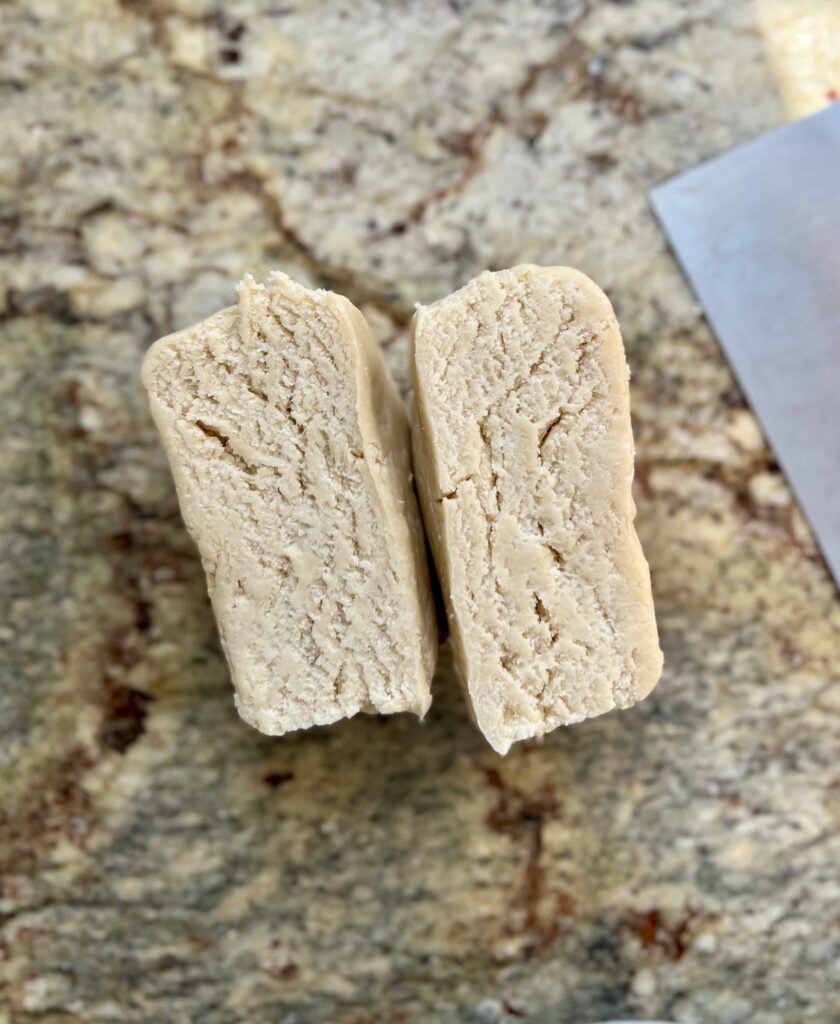
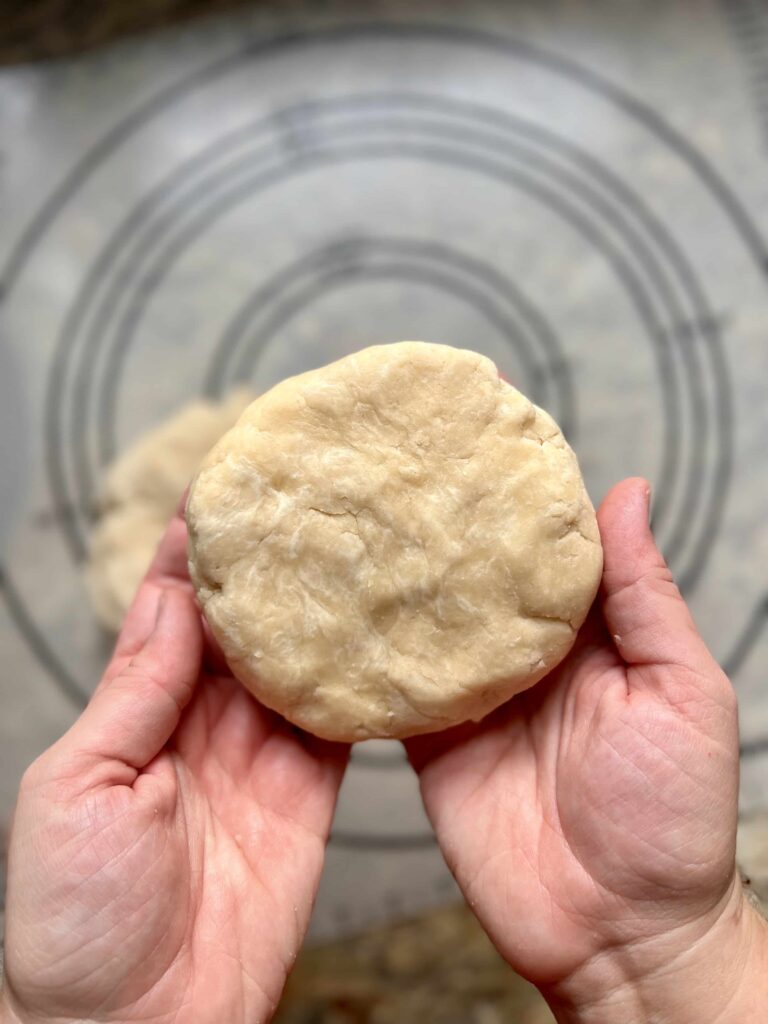
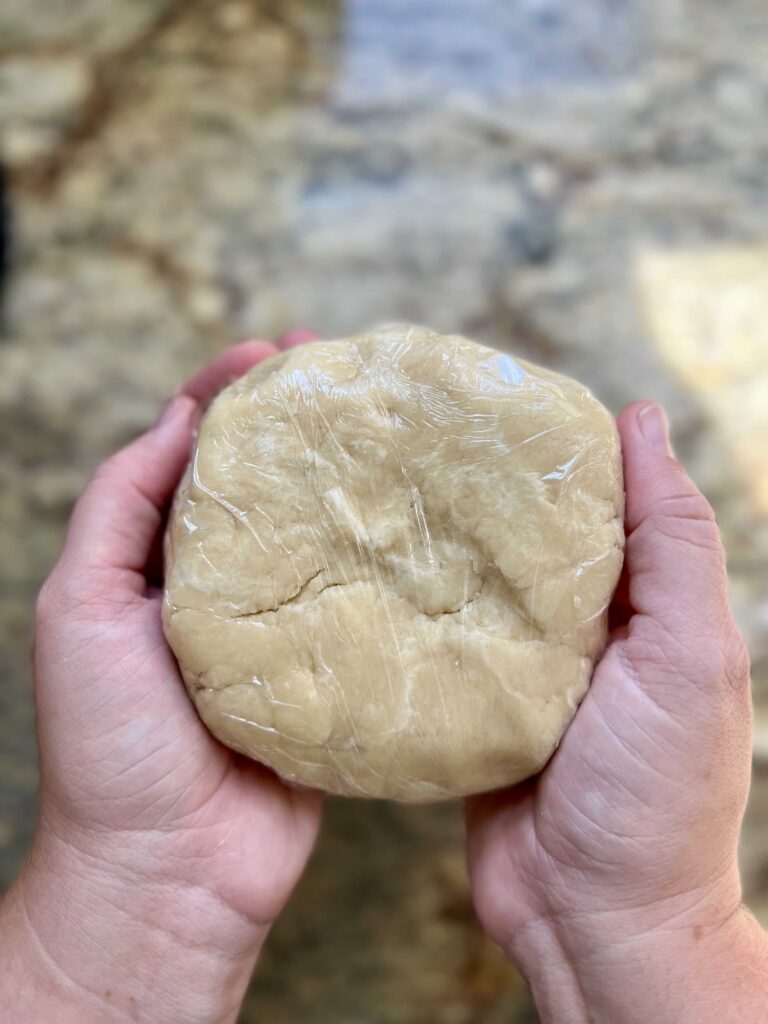
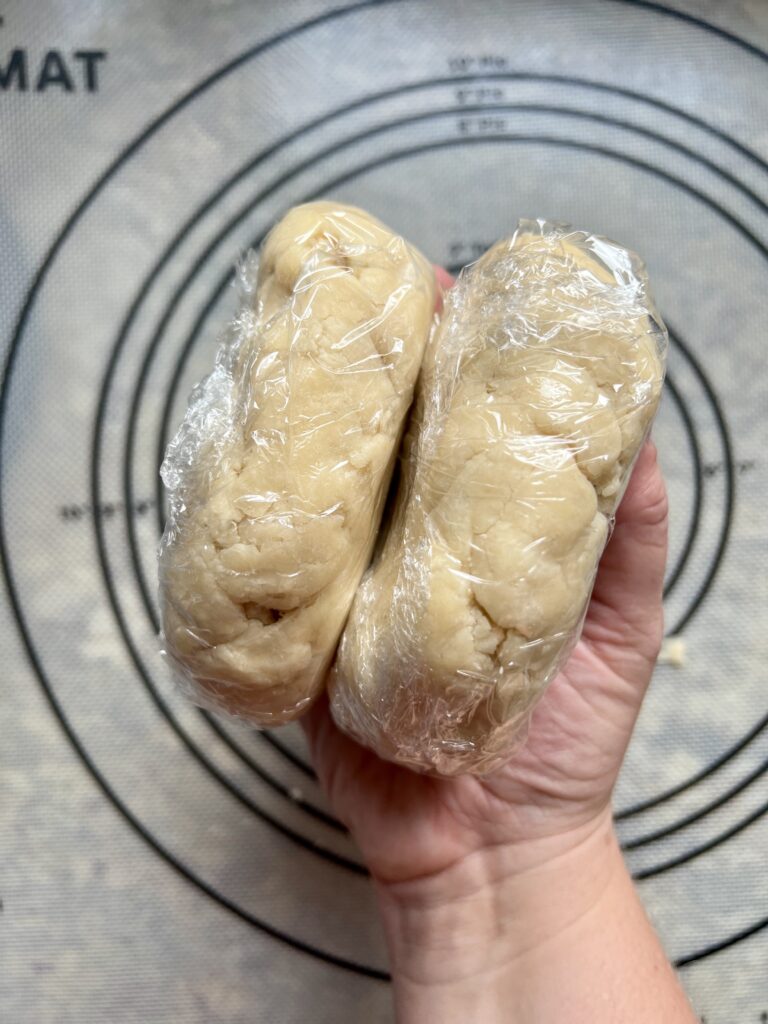
Roll Out Sourdough Pie Crust
On a very lightly-floured pastry mat or surface, roll out the chilled pie crust. Turn the crust after every roll about 45 degrees so that you get an even, circular shape. I love using a pastry mat to roll out pie crust on. It’s so much easier to make sure the crust is the right size for your pie plate. I often use a glass pyrex pie plate for my pies because I can see them baked all the way through, and that’s the way my mom did it — there’s something to be said for tradition! Fold the pie crust into quarters and transfer the pie dough to a 9 inch pie plate. For a pie with only one crust, crimp the edges, prick with a fork and bake blind. You can use pie weights to help the crust stay in place if you aren’t filling the crust and baking it right away. If you are using a double crust, fill the bottom crust with pie filling. Roll out the second crust and lay it on top of the pie, crimping the edges as you go. Bake pie according to recipe’s directions.
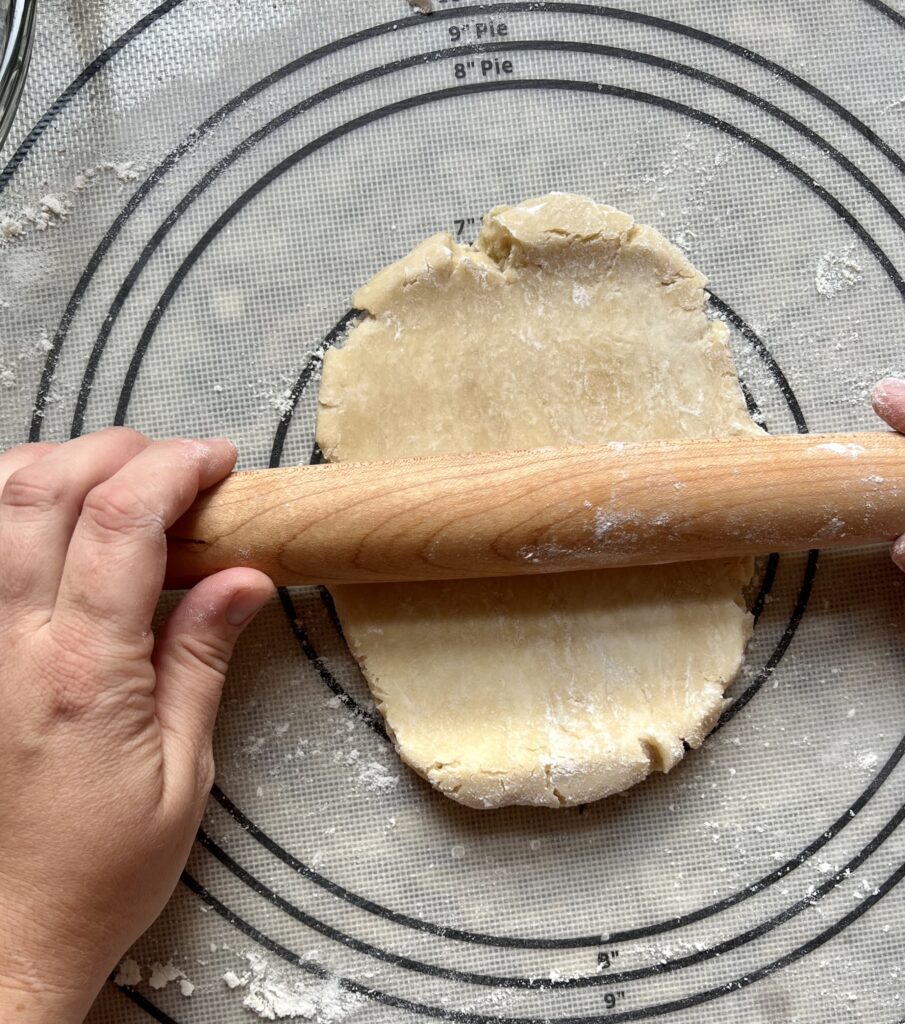
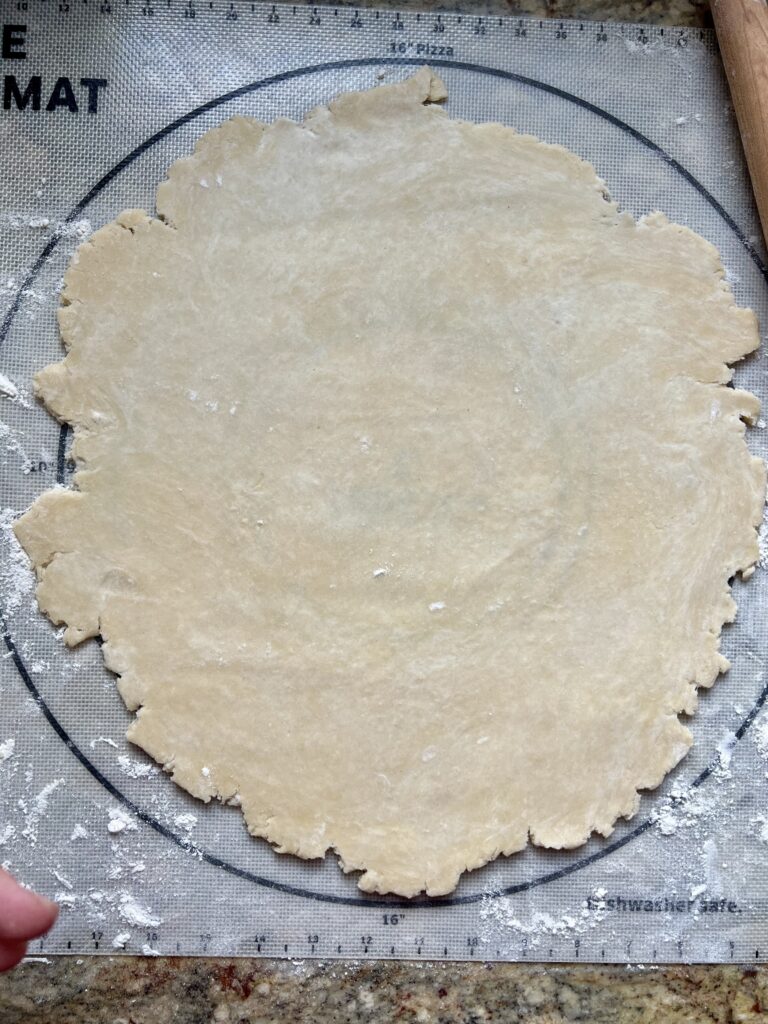
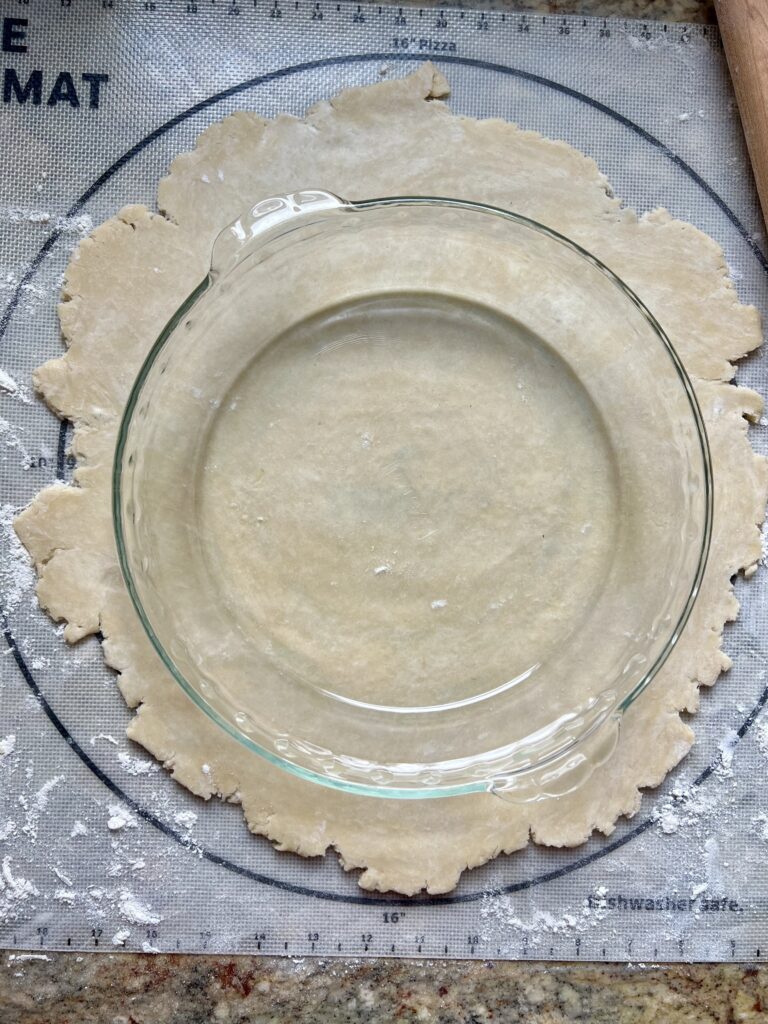
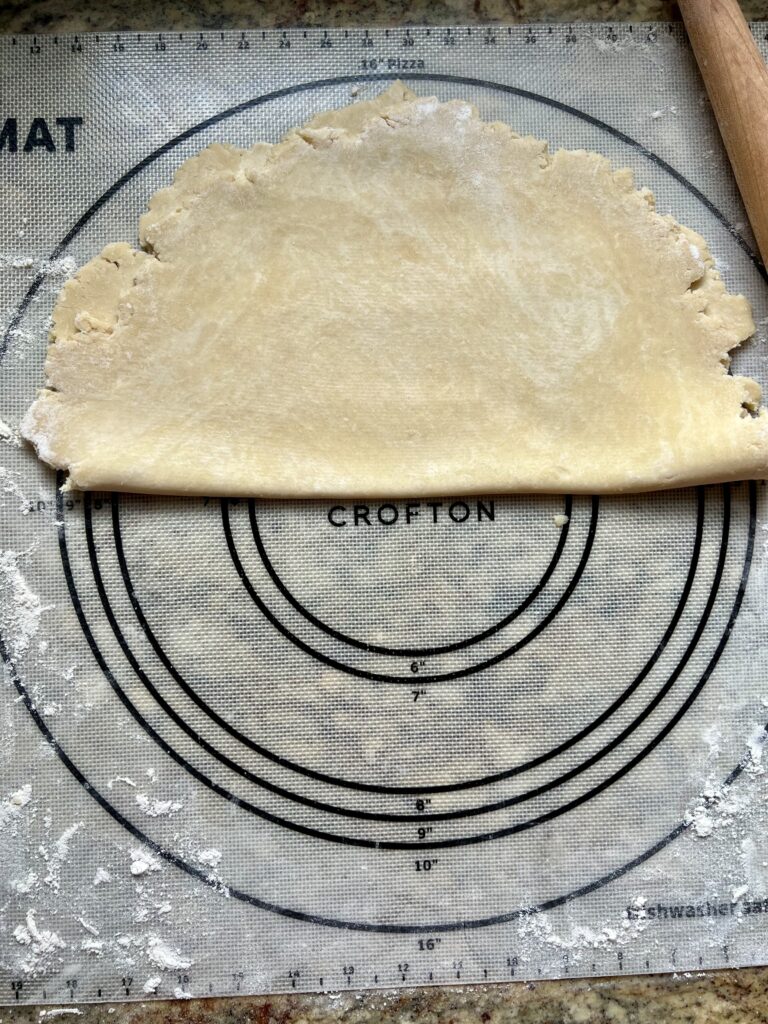
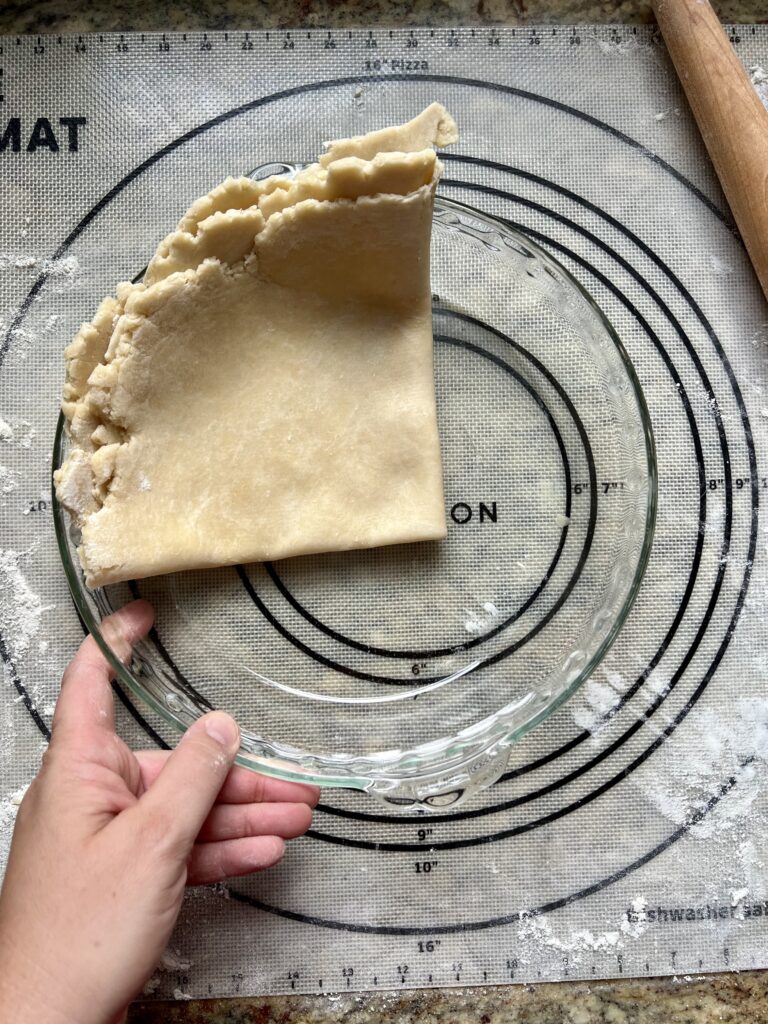

Freeze or Refrigerate Pie Crust
This sourdough pie crust recipe makes two crusts, a top and bottom. The dough can be refrigerated for 3 days. The longer it sits in the refrigerator, the more flavor the crust will have. It could lend to a more sour flavor as well, so be aware how long you leave it in the refrigerator. Sourdough Pie Crust can also be wrapped and frozen for up to 3 months. Pull it out of the freezer and set in the refrigerator to thaw before using.

Crimp the Edges
Bottom or Single Crust: For a pie with one crust, use kitchen scissors to cut away the extra crust that is overhanging the pie plate. Save it for patching the crust as needed or to bake into little “pie chips.” Roll the crust under just a bit to make a uniform circular edge. Then take your knuckles on one hand and a finger on the other. Put your knuckles on the inside or outside (either works) of the crust and press in between the knuckles with your finger, creating a crimped edge. Repeat this process around the pie.

Top Crust: For a pie with a top crust, prepare the bottom crust without crimping the edges. Roll the top crust under the top edge of the bottom crust, sealing the pie shut. Then proceed to crimp the edges. Slice a few holes in the top of the pie with a large knife to vent steam while the pie bakes.

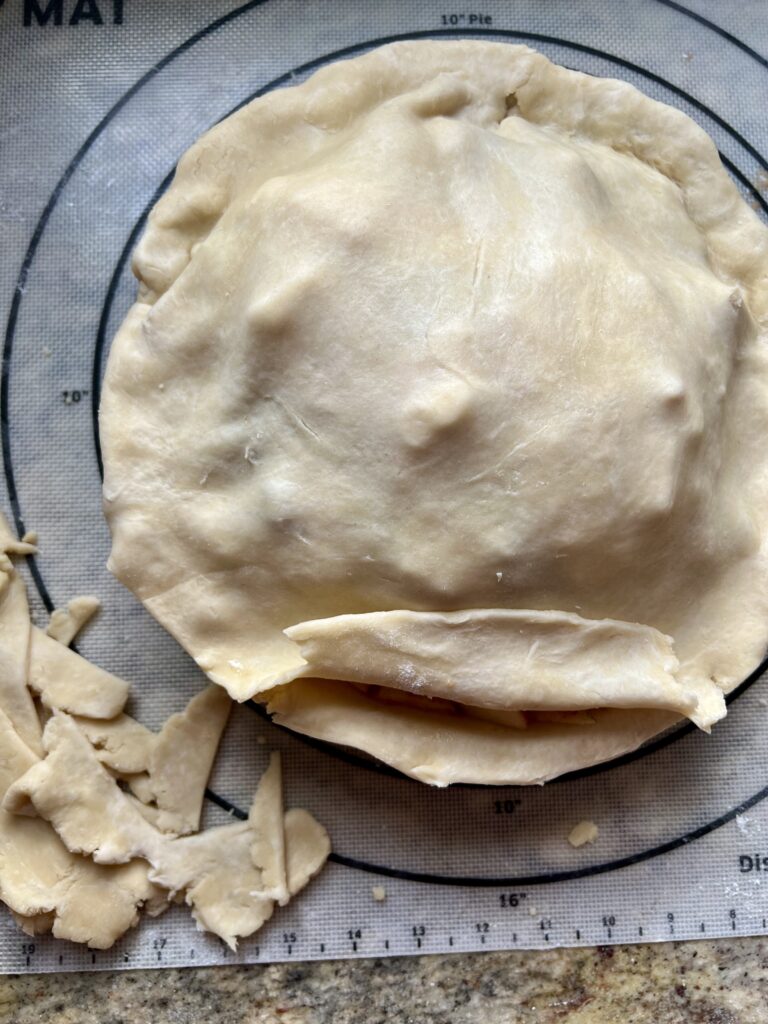


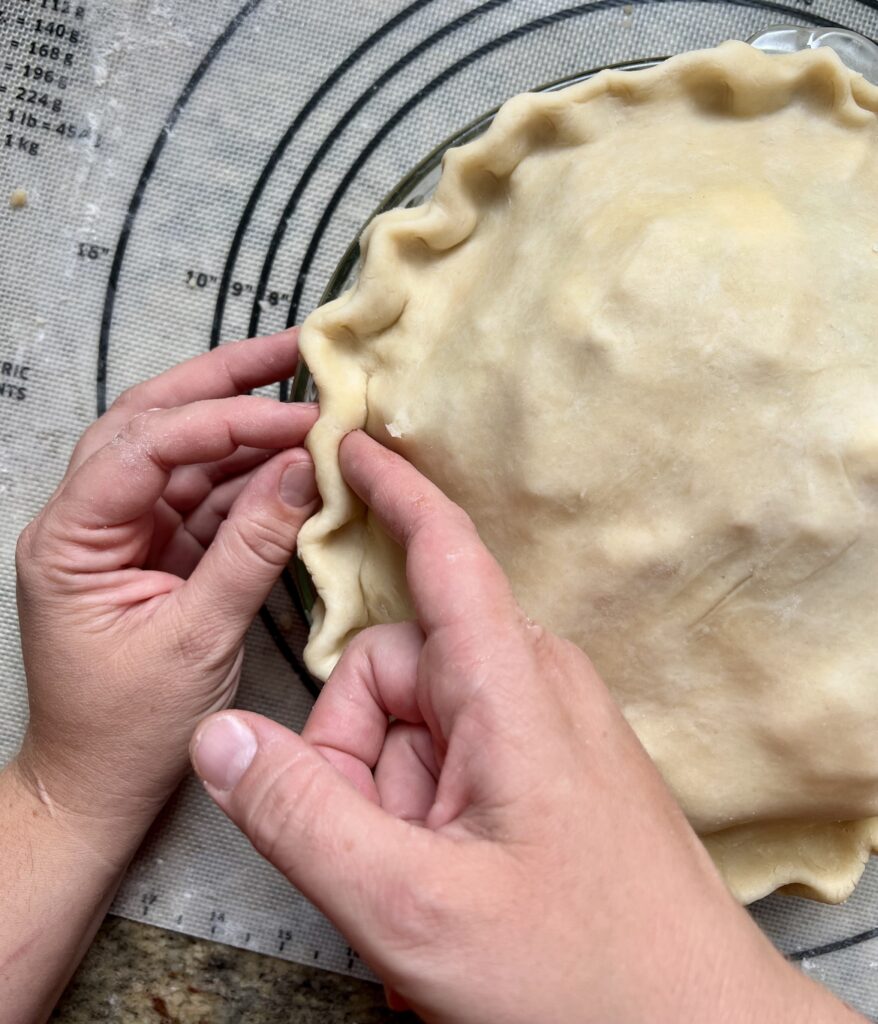
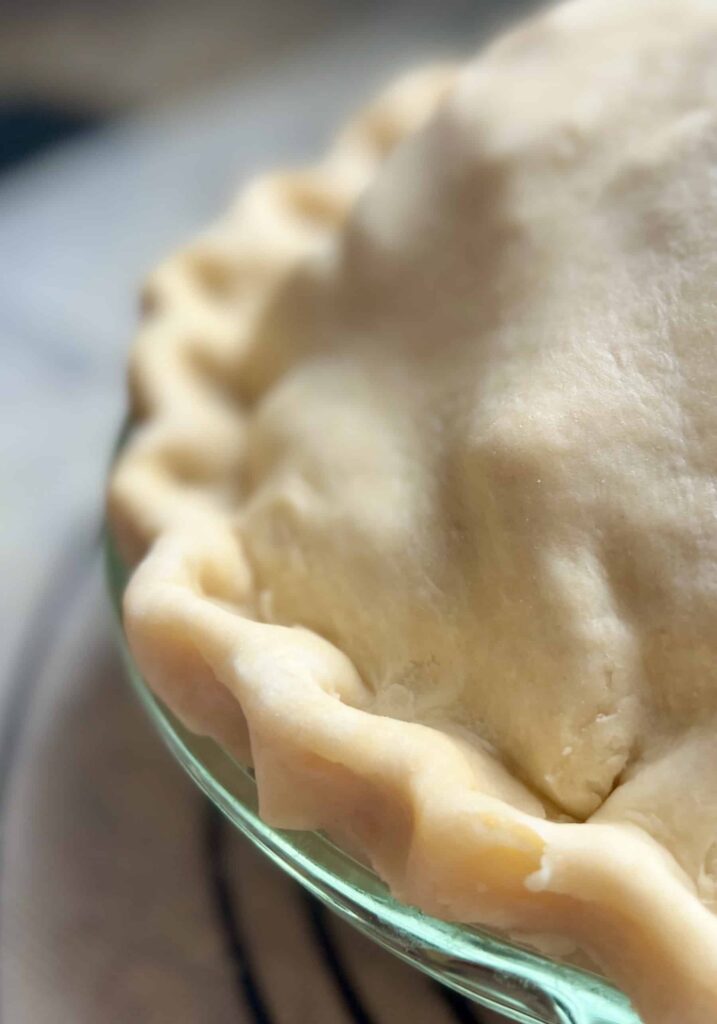
Bake Sourdough Pie Crust
Blind Baking: For a single pie crust, preheat the oven to 375 degrees and bake with parchment paper/pie weights for about 20 minutes. Take the pie weights out of the pie, prick the bottom of the crust with a fork and continue baking for 10-15 minutes until pie crust is lightly browned and baked through.
Baking a Pie with Top/Bottom Crust: For pies with top and bottom crusts (often fruit pies), bake at 425 degrees for the first 20 minutes. This high heat gives a flaky and even crust. Then reduce the temperature to 350 degrees and continue baking about 60 minutes until the filling is bubbly and the crust is golden brown. Use a pie shield or pieces of aluminum foil over the crust if it is browning too quickly.
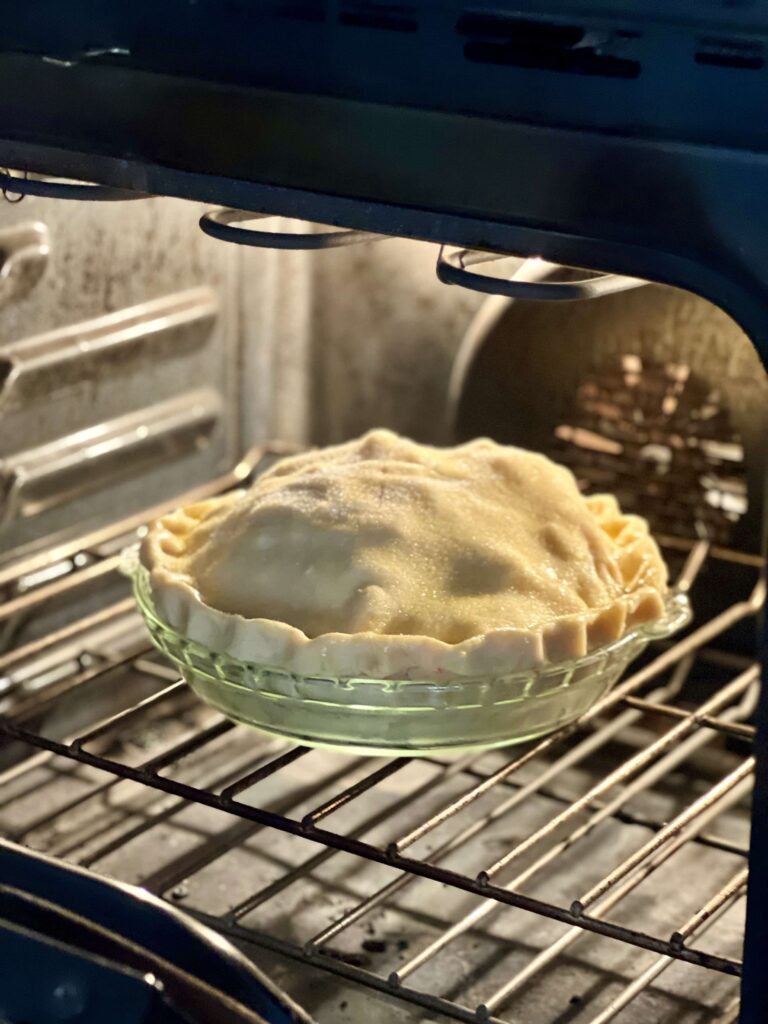
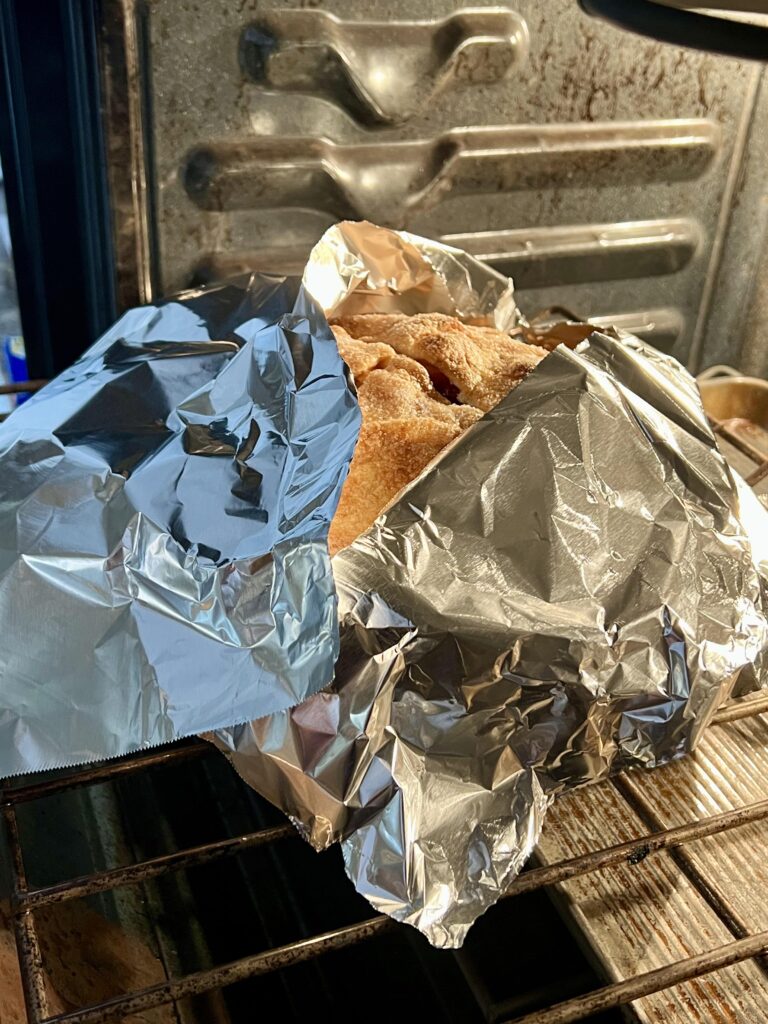
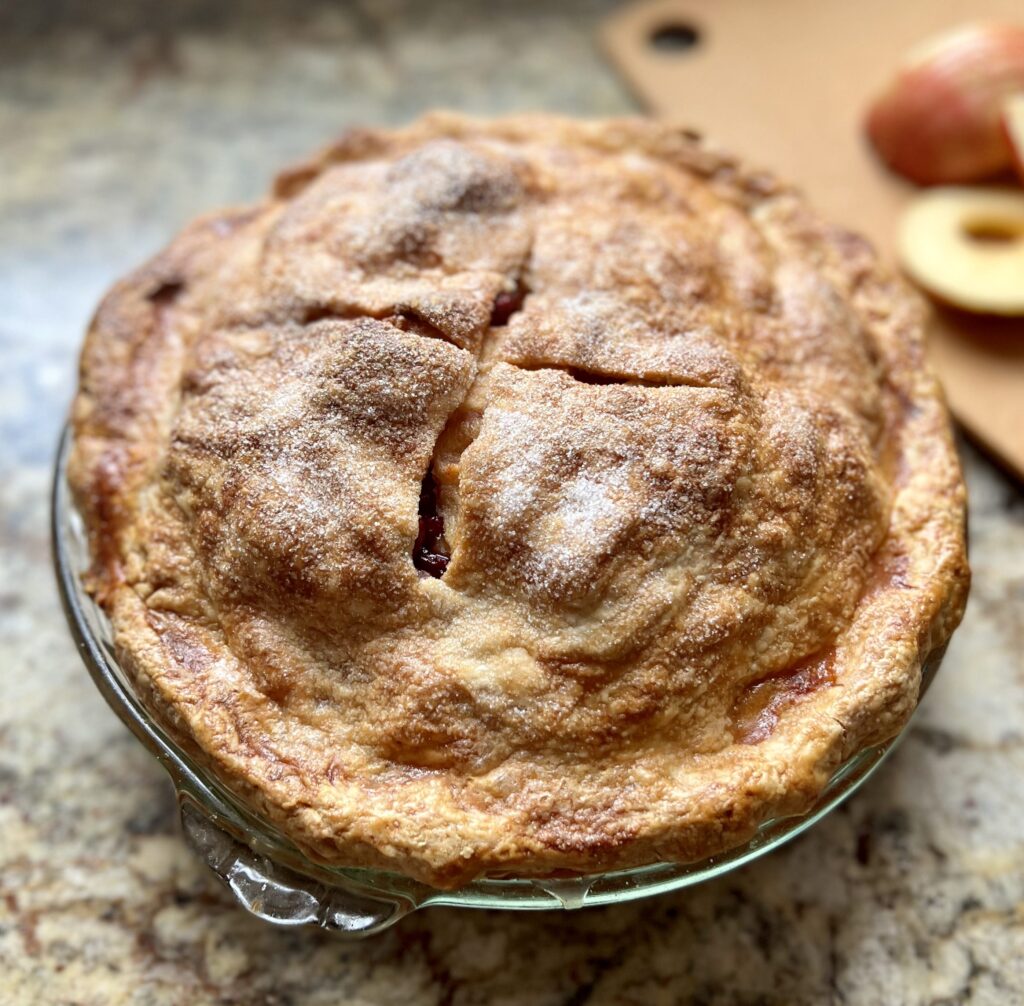
Sourdough Pie Crust Recipe Tips
The secret to flaky pie crust: stop the gluten from developing in the flour. To do this, I use a two step process when making pie dough. First cut the butter into half of the flour mixture to form a thick paste. The butter completely coats all of the flour, coating each piece of flour in fat. Think of what happens when you have butter on your hands and you go to wash them: it’s hard to get your hands clean unless you use soap. Gluten strands start to form when the flour comes in contact with water. Butter makes it difficult for the flour to absorb water which in turn prevents the development of gluten in the pie dough. After you’ve got a thick paste, add the rest of the flour and mix the dough until you have small crumbs before adding in the sourdough discard and a little extra water if you need it. This process results in a dough that is very easy to work with and will bake up into long thin layers of flaky dough.
Long Fermented Option: Long fermenting a sourdough discard recipe has the health benefits of sourdough fermentation. To long ferment this pie crust, stick the dough in the refrigerator for up to 3 days before using.
How to Store Sourdough Pie Crust
Sourdough pie crust can be stored in the refrigerator for 3 days or stored in the freezer for a couple of months. Once you bake the pie crust, the filling of the pie will determine how best to store the pie. A baked fruit pie should sit at room temperature up to 2 days or be refrigerated for up to 5 days.
If you liked this, you’ll also like some of my favorite pie recipes
If you love pie, you’ll definitely want to try these sourdough versions of my favorite pies.
Frequently Asked Questions
I love brushing a little egg wash on leftover pie scraps. I’ll sprinkle them with some cinnamon/sugar and bake at 375 degrees until golden brown, about 15-20 minutes. These little “pie chips” are delicious and fun to snack on while we wait for the pie to bake and cool. Check this out here.
Refrigerate the crust for up to 3 days or wrap and freeze the pie crust for up to 3 months. You can use the leftover scraps to make “pie chips” or you could make an extra pie 🙂
I like it in both. Use a Tablespoon of sugar and a young/fresh discard or bubbly sourdough starter in sweet pies for less of a “sour” flavor.
Add a little more ice water about a Tablespoon at a time. Don’t be afraid to mix the dough with your hands until all of the dough is moistened and forms a ball.
Add flour a Tablespoon or two at a time until you reach the perfect consistency to roll out. Sourdough discard is more or less runny depending on where it is in the fermentation cycle. For a more runny discard, you may not need any extra water. For a thicker discard, you may need a little extra water.

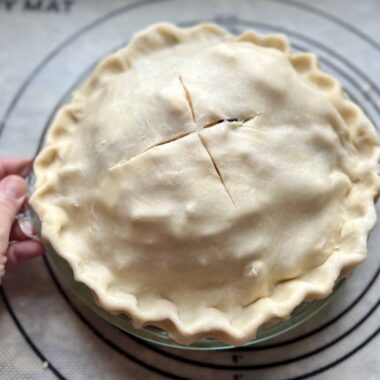
Sourdough Pie Crust
Ingredients
- 325 grams all purpose flour divided into 150 grams and 175 grams (about 1 cup/1.25 cups total)
- 16 grams sugar 1 Tablespoon (see recipe notes)
- 6 grams salt 1 teaspoon
- 222 grams unsalted butter 1 cup, chilled
- 135 grams sourdough discard 100% hydration chilled is best, (1/2 cup)
- 20-40 grams ice water as needed (about 2-4 Tablespoons)
Instructions
- In a large bowl, mix together 150 grams flour with sugar and salt.
- Cut the cold, unsalted butter into small chunks (about 16 pieces per stick of butter) and add to the flour mixture. Using a pastry cutter, cut the butter into the flour mixture until all of the butter is moistened by the flour and forms into a thick paste (see pictures in the recipe post).
- Add the remaining 175 grams (1 1/4 cup) of flour and use the pastry cutter to distribute the flour until the mixture looks crumbly.
- Pour the chilled sourdough discard on top of the flour/butter mixture and stir to combine. Use your hands to form the dough into a ball. If the dough is too crumbly, add ice cold water a Tablespoon at time until it comes together.
- Cut the ball in half and form two balls of dough. Wrap the balls in plastic wrap, press down on them to form a disc shape and stick in the refrigerator to chill. Chill the dough for 20 minutes if using right away or for up to 3 days if using later. Wrap and freeze for up to 3 months. Use according to pie recipe directions.

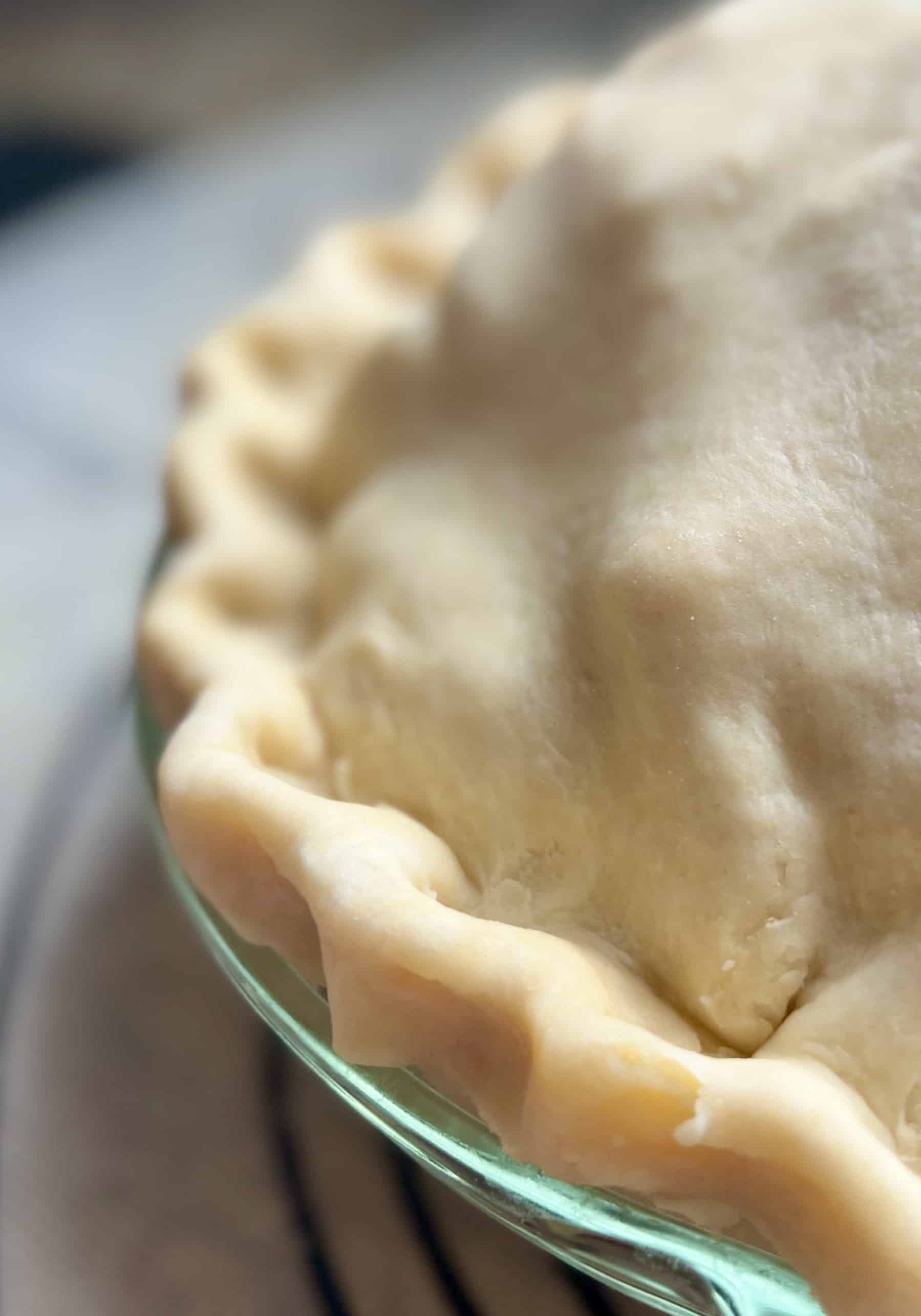






Looking forward to enjoying this on our Thanksgiving day table! 🥧 🦃❤️🙏🏻😋
This made a beautiful and delicious pie crust.
So glad you loved it. Thanks for the review!
I’ve made a considerable number of pies in my life, but this was the best crust I’ve ever made! It’s now the only recipe I’ll use. Thank you so much!
I’m so glad you loved it! It’s my favorite too!